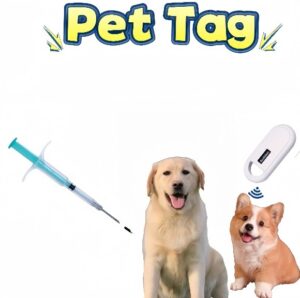Five important functions of pet microchips

In modern pet life, pet microchips play an increasingly important role. It is as small as a grain of rice, but contains a huge energy for the management and protection of pets to bring a lot of convenience, the following is the pet microchip of the five important functions.
1.Permanent identification function. Unlike traditional collar tags, the microchip is implanted under the pet’s skin and becomes its lifelong exclusive “ID card”. Once the pet is lost, even if the collar is accidentally dislodged, rescuers or animal shelters only need to pass a professional scanner to quickly read the unique code within the microchip and accurately identify the pet owner’s information
2.Help disease prevention and control. The chip can record the pet’s vaccination records, past medical history and other key medical information. Veterinarians can scan the chip to see at a glance when receiving a consultation, which not only avoids repeated vaccinations, but also quickly develops accurate treatment plans based on past illnesses, and protects the health of pets.
- Effectively curbing the chaos of pet trading. Regular breeding farms implant microchips in pets to record their pedigree, birth information, etc. Purchasers can verify the authenticity of the microchip by querying the microchip, so that illegal breeding and unscrupulous businessmen who substitute the best for the best will have nothing to hide, and to maintain a healthy and orderly environment in the pet market.
- Facilitate cross-border travel for pets. For some pets that often travel abroad with their owners, a microchip is essential. It stores the pet’s identity and health information in line with international standards, which makes it easy for customs and other departments to check and ensure that pets can enter and exit the country smoothly and accompany their owners to travel around the world.
- Supporting the management of urban stray animals. The shelters implant microchips in stray animals so that they can contact their owners in time if they are found; if they are not found, they can also arrange sterilisation, epidemic prevention and other scientific control measures for them on the basis of the microchip information, so as to gradually reduce the number of stray animals and promote harmonious human-animal coexistence.
Pet microchips have brought great convenience and protection to pet owners and society as a whole. With the further development and popularization of the technology, it is believed that pet microchips will play an even more important role in the field of pet protection and animal management.

